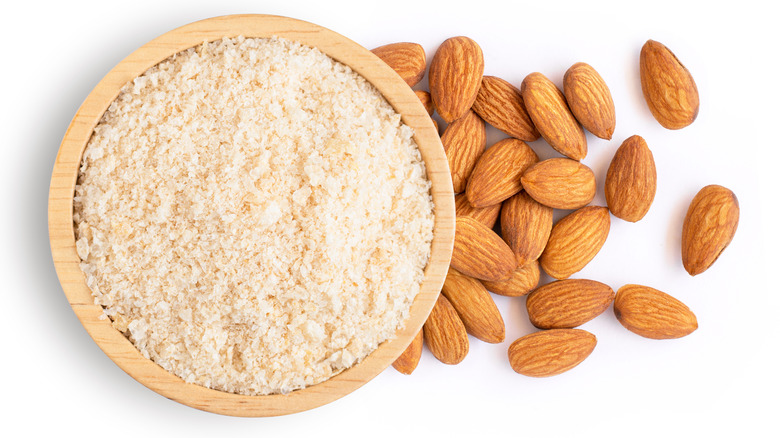How Adding Nuts Can Make Or Break Your Homemade Biscotti Texture
There is nothing quite like the crunch and floral sweetness of a good almond biscotti. Nuts, in general, are an important ingredient in biscotti making, going back to the treat's Tuscan origins. They provide excellent flavor, bring additional texture, and are one of the ingredients that have helped make these Italian cookies such popular and delectable treats. The thing is, though, depending on how you incorporate them, nuts can either make or break the texture of your biscotti.
The texture of biscotti walks a fine line between being too soft and too hard. The proper texture should be a mix of both. The exterior should have a nice crunch, while the inner cookie should have a semi-soft, easily chewable crumb. Getting this texture right can be a tricky affair, as it is affected by a number of factors including fat content, baking and cooling time, how you beat your eggs, and the amount of nuts present in the dough.
Also important to the biscotti's texture is the way the nuts are cut. While nearly every Italian biscotti recipe calls for chopped nuts, a far less common trick is to take a portion of those nuts and grind them into a fine meal. Doing this will bring even deeper flavor and help keep your biscotti from turning into cement.
Nut meal adds flavor and minimizes gluten
There are a few steps to take before grinding the nuts down into meal. First, toast all of the nuts you'll be using to intensify their flavor. At this stage you should coarsely chop the remaining nuts that will be part of the main body of your biscotti. Having whole nuts in your biscotti will make them difficult to slice and could throw off the crumbly texture. Chopped nuts, on the other hand, make slicing a lot easier, while also providing a texture more consistent with the chewiness you're aiming for.
Before incorporating the chopped nuts into the dough, set a handful aside to be ground into a fine meal in your food processor. You'll then mix both the meal and the chopped nuts together into the biscotti dough. The nut meal does two things: First, it seamlessly integrates the flavor of your chosen nut into the biscotti. Second, it helps inhibit gluten production that will affect the crumb of the cookie. Overdeveloped gluten in the crumb will cause the biscotti to become too hard, thus requiring several dunks into a hot mug of coffee in order to get it soft enough for eating.
With the addition of nut meal, the biscotti should have that crunch and crumbly texture you're aiming for. Whatever nuts you like to use, be they almonds, walnuts, or cashews, set aside a little extra to grind into meal to ensure that perfect biscotti texture.

